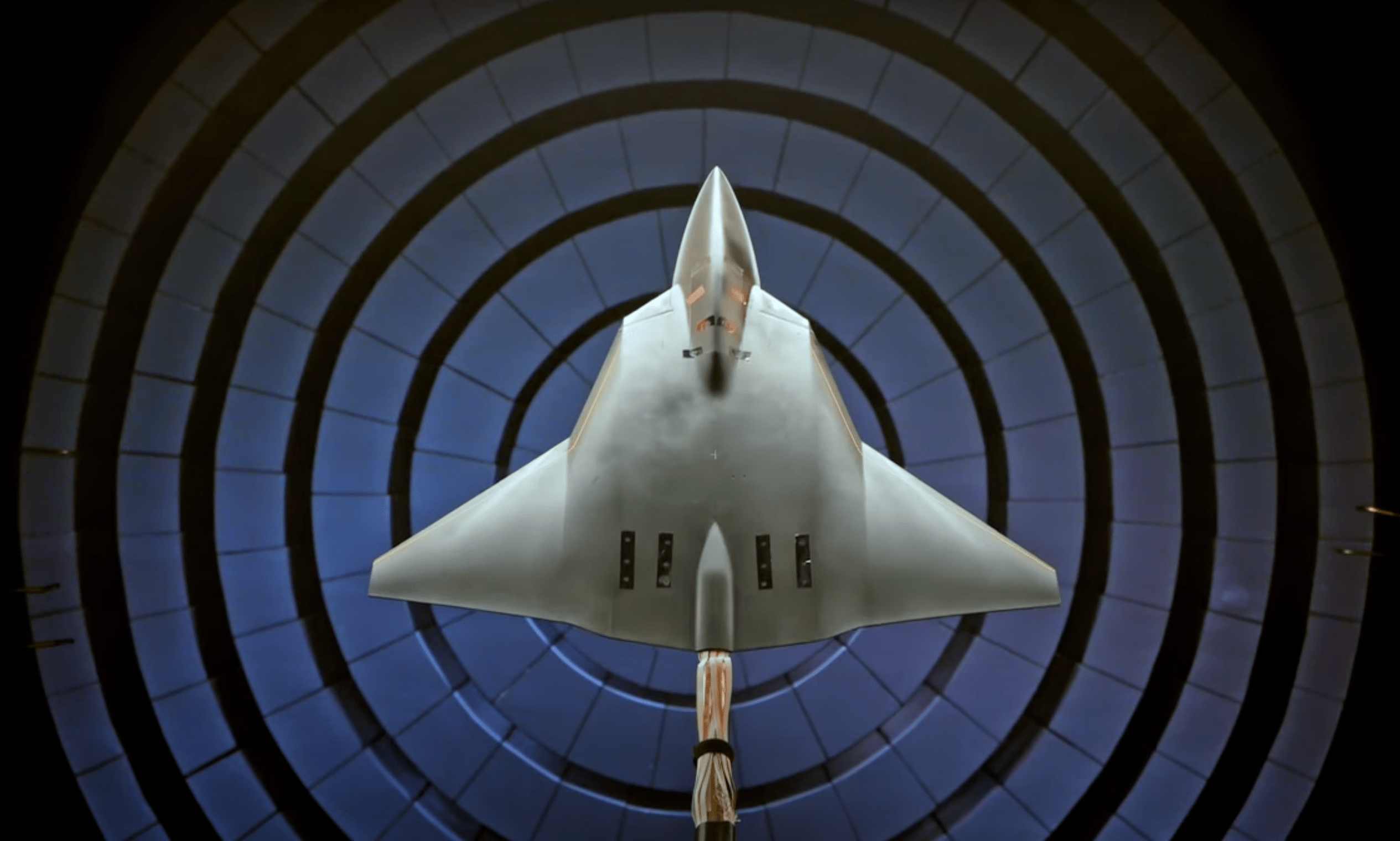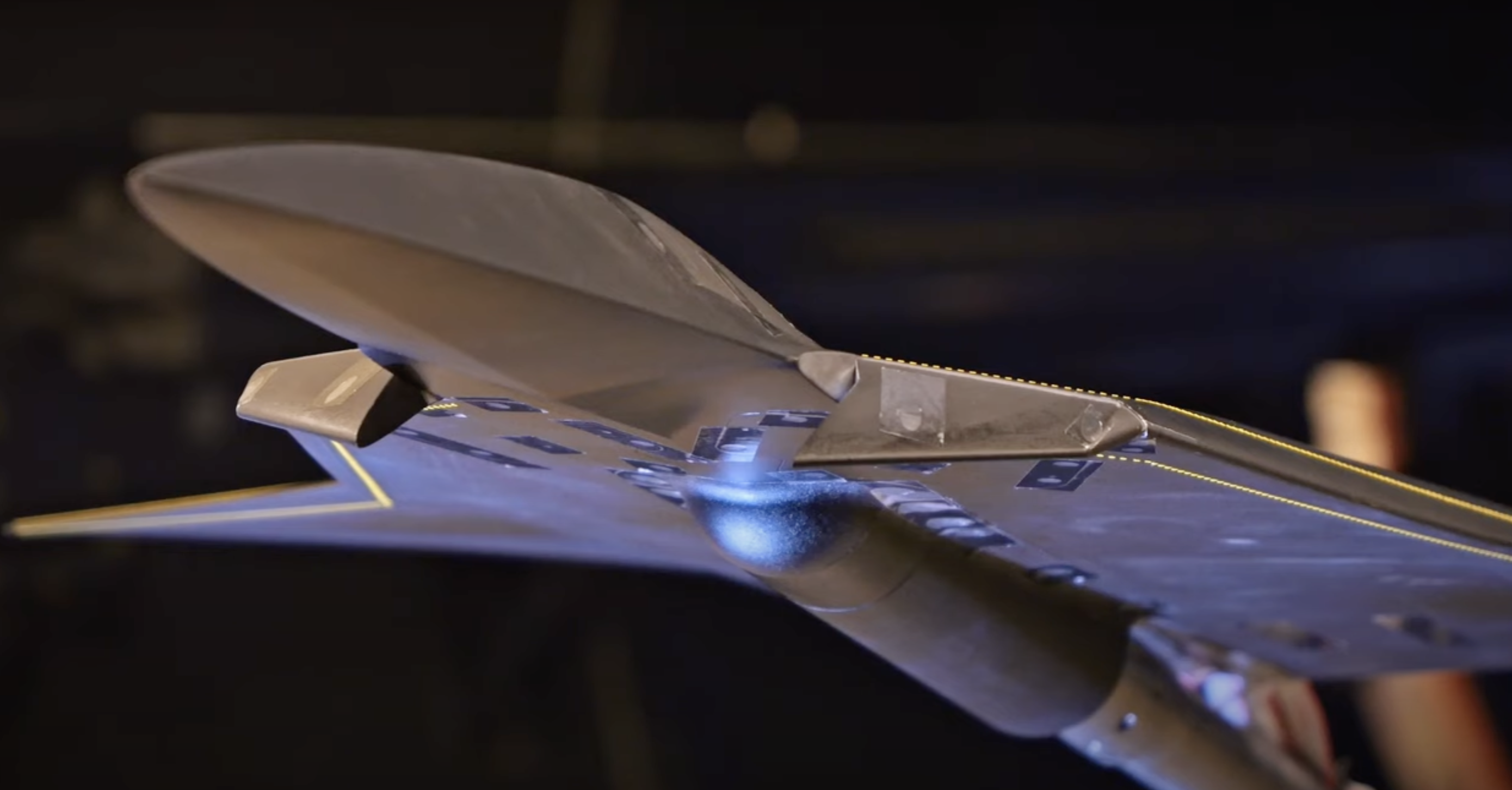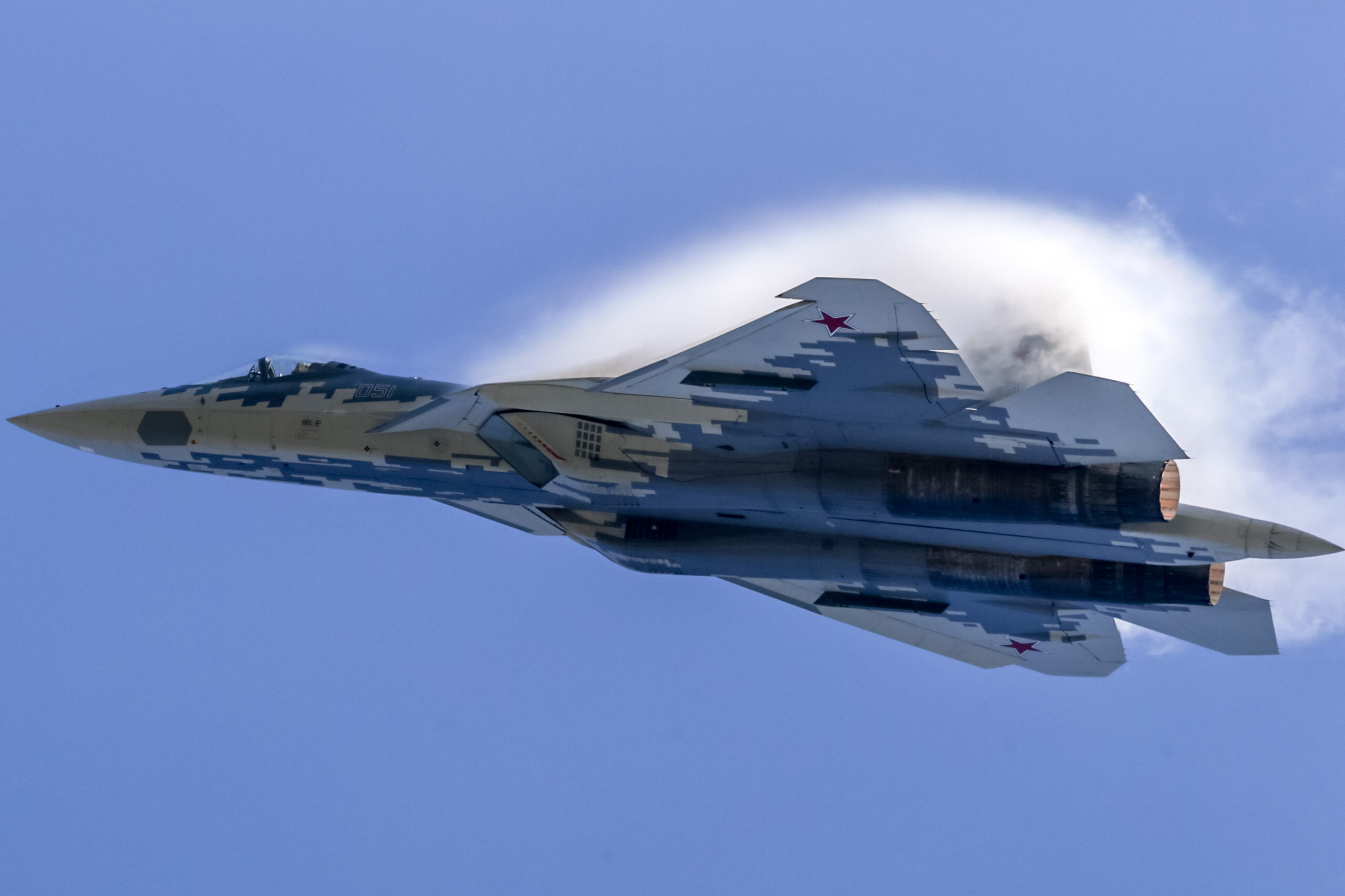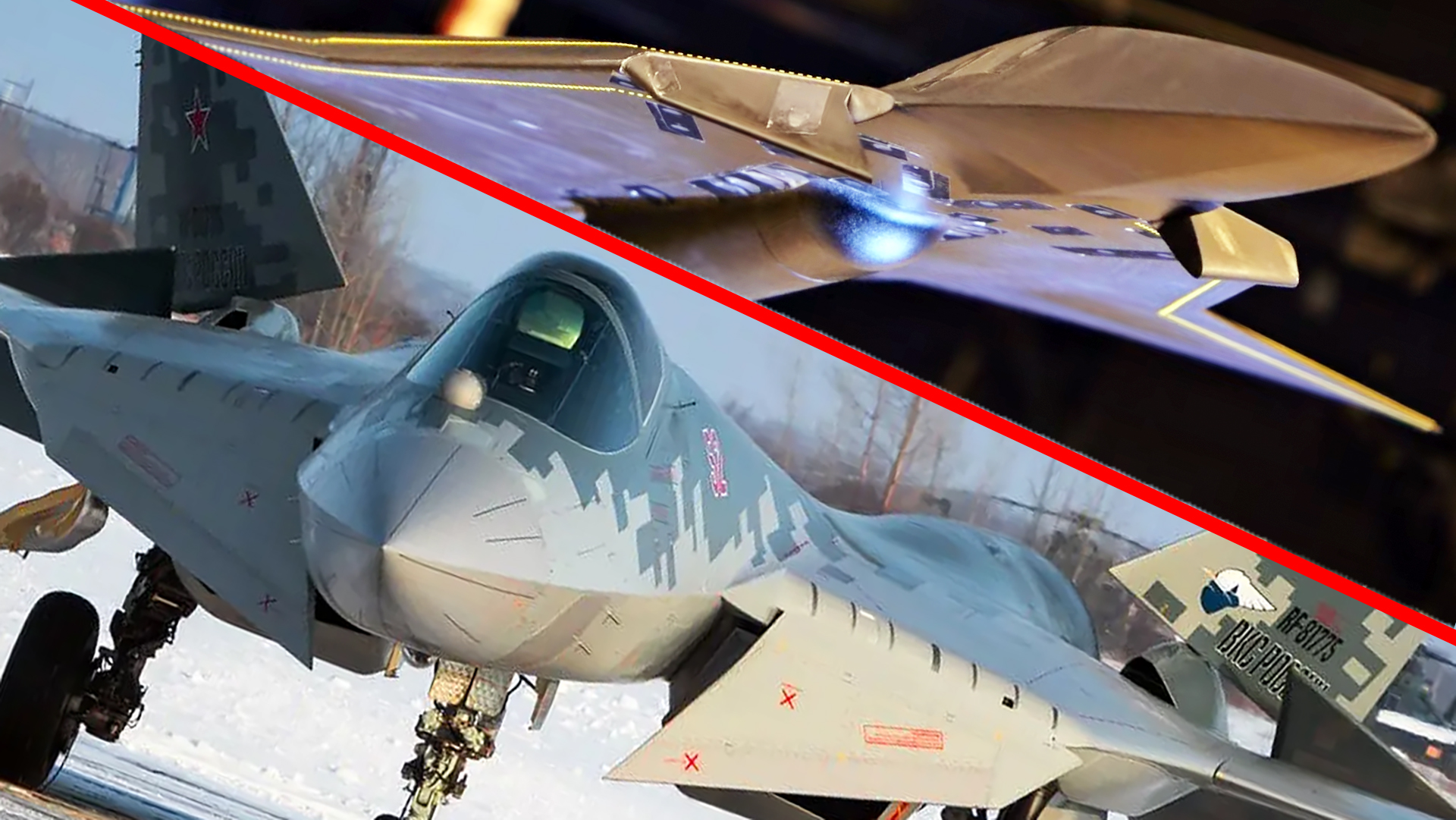An intriguing video has surfaced recently, showing the wind-tunnel testing of a French future fighter concept, a tailless jet fitted with prominent leading-edge vortex controllers, or LEVCONs. Interestingly, this is a central feature of the Russian Su-57 Felon advanced fighter. In fact, they look extremely similar in general configuration. This specialized control surface arrangement could see more use in the future, possibly on new-generation fighter designs with tailless layouts.

The original video was posted by Onera, or the Office national d’études et de recherches aérospatiales — France’s national aerospace research center. The footage in question shows a wind tunnel model prepared for the Superman project, a study conducted by Onera’s Lille branch. The test, in Onera’s S1 wind tunnel, was designed to “study the behavior of a combat aircraft at the limits of its flight envelope.” It included “a new LEVCON control surface for the stealth aircraft of the future is designed to achieve 100 degrees of pitch in one second.” The tests appear to have been carried out at the end of 2021.


The Superman research project was presented at the Paris Air Show last summer and is intended to inform the development of the Next Generation Fighter (NGF), a crewed combat aircraft that will form the centerpiece of the multinational Future Combat Air System (FCAS). Led by France and Germany, this next-generation air combat program also now includes Spain and Belgium.
It’s worth pointing out that, in France, FCAS is alternatively known as Système de Combat Aérien du Futur (SCAF). Furthermore, it should not be confused with the separate British-led FCAS effort, now more commonly known as the Global Combat Air Program (GCAP), after Italy and Japan joined. Both FCAS/SCAF and GCAP include stealthy crewed combat aircraft, but also much more: drones, air-launched weapons, and potentially other aerial platforms are also anticipated.

Back to Superman, according to a report from Aviation Week last summer, the “research program is focused on studying the limits of a combat aircraft’s flight envelope and developing knowledge on maneuverability. Among other things, the aim is to define the shape that will enable the Next Generation Fighter (NGF) to be as maneuverable as possible.”
Onera describes the Superman test model as “A generic form, which could be representative of the NGF.” Exactly how much of the Superman combat aircraft research program will eventually make it into NGF won’t be known for some time. With some — but by no means all — previous concepts showing a tailless fighter, it’s clear that this is one of the options under consideration. If chosen, then it could make sense for this configuration to be combined with LEVCONs.

Generally speaking, tailless combat aircraft designs confer significant advantages in terms of broadband low observability against a wide variety of radar types and reduce radar signature from multiple perspectives. Other benefits include reduced aerodynamic drag, providing better performance for sustained high-speed dashes and cruising flight.
On the other hand, a tailless configuration can adversely affect overall maneuverability unless combined with advanced fly-by-wire digital flight control technology, and perhaps also thrust-vectoring engine systems. LEVCONs would be another way of conferring an improved level of stability and especially agility for a tailless design like that seen in the S1 wind tunnel, without sacrificing heavily the positive attributes of a tailless design.

Fitted at an airframe’s wing roots, LEVCONS offer different benefits to combat aircraft at various parts of the flight envelope.
For low-speed flight, LEVCONS can generate additional lift, boosting control authority, for example on approach to an aircraft carrier. It’s for this reason primarily, that a less pronounced version of them is found on Russia’s carrier-based MiG-29K/KUB fighter and the naval variant of the Indian HAL Light Combat Aircraft. Once deployed, they improve the aircraft’s stability during the approach to the ship, but they are a much simpler proposition than the kinds of all-around flight-control surfaces found on the Su-57 and the Superman study. These can work like something of a hybrid maneuvering slat and canard and even operate independently to instigate roll as part of the aircraft’s integrated digital flight control system.

While France is planning a carrier-based version of the NGF, naval operations are not the driver behind the LEVCON studies for a tailless future European fighter.
Instead, LEVCONs are being considered as a way of ensuring the NGF is as maneuverable as possible — even without any kind of vertical tail surfaces and a blended delta-like wing architecture. While the Su-57 does have vertical and horizontal tail surfaces, maneuverability is the reason that these devices are also found on the Felon — which features no fewer than 12 moving flight control surfaces (plus thrust-vectoring engine nozzles).

In this kind of application, the LEVCONs serve to increase static instability, boosting maneuverability, especially at supersonic speeds. Specifically, they move the aircraft’s center of pressure forward, making it more unstable and therefore more maneuverable. Managing high static instability also requires an advanced fly-by-wire flight-control system.
When the Su-57 first appeared in its prototype T-50 form, it was also reported that the most important function of the LEVCONs is “to recover the aircraft in the event of a thrust-vector control failure at post-stall angles of attack. They do this by deflecting sharply downward, reducing the plan-projected area of the wing-body section in front of the center of gravity.”

So, while LEVCONs can offer several advantages to highly maneuverable aircraft designs, it’s notable that they are particularly relevant for tailless fighters, which are being looked at closely in Europe, the United States, and China, for example.
When it comes to low observability, a maneuvering surface in the critical frontal aspect of the airframe is not ideal, but this can be overcome, at least to a degree, by locking the surfaces in a streamlined configuration that maximizes low observability when not needing to make hard maneuver in certain areas of the aircraft’s operating envelope. They can be designed to meld nearly seamlessly into the aircraft’s overall low-observable design in this position in an attempt to minimize any penalty paid in terms of radar signature.
There’s a growing body of evidence suggesting that China is focused on a tailless configuration for its next-generation fighter. At the very least, a tailless design appears to be under intensive study. A tailless test vehicle appeared at the airfield of one of China’s biggest fighter manufacturers in October 2021. The War Zone was the first to report on this still-mysterious airframe.

In January 2023, an intriguing photo appeared on social media showing what also looks to be the same or very similar fighter-sized tailless aircraft concept out of China. You can read our analysis of that here.

For its part, China is very likely still weighing up the pros and cons behind a tailless design for a tactical aircraft.
When Lockheed Martin’s Skunk Works teased a notional sixth-generation fighter concept last November, the design was tailless. In fact, the company has repeatedly shown different tailless large stealthy fighter-like concepts in the past, too. The same can be said for concept art based around sixth-generation fighters from Northrop Grumman, Boeing, and Collins Aerospace.

Of course, we can only speculate as to what the Air Force’s NGAD fighter might look like, although it will certainly be large to maximize endurance and payload. Those features may not be as critical of design drivers for European sixth-generation fighter-like aircraft. Regardless, previously, The War Zone has assessed it likely that:
“The NGAD fighter should be a very ‘slick’ design, featuring an elongated blended fuselage and wing configuration that lacks traditional horizontal and vertical stabilizers. This unprecedented tailless configuration would largely be due to the effort to maximize survivability via low observability (stealth) across a broad radio frequency range above raw maneuverability, but it should significantly lend itself to aerodynamic efficiency.”

Although NGAD might still have thrust-vectoring engines, it seems more likely that, if it does, these may well not be included for extreme maneuverability.
On the other hand, the Onera studies in France suggest that the NGF has very much been drafted with a high level of maneuverability as a key factor. In a tailless configuration, this may well lend itself to some kind of a combination of LEVCONs and thrust-vectoring controls. At the very least, it seems highly likely that both these are being considered, even if they don’t necessarily make it onto the production aircraft.
When a full-scale model of the NGF was first presented by Dassault Aviation at the Paris Air Show in 2019, the design included canted tailfins, but no obvious provisions for LEVCONs at the wing roots.

A subsequent artwork concept presented by Airbus retained twin tailfins, although much less splayed, and it also featured very prominent leading-edge root panels, perhaps intended to represent LEVCONs for maneuverability, and/or possibly to indicate potential additional radar arrays or electronic warfare antennas.

Whatever its ambitions as regards agility, like the NGAD fighter, NGF will be a stealth design. The German Ministry of Defense has, in the past talked about achieving a “balancing act between high stealth capability and the best possible aerodynamics,” indicating that there will have to be a tradeoff between low observability as well as maneuverability and kinematic performance.
We also know that FCAS will benefit from low-observable technologies that were tested under the Low Observable UAV Testbed (LOUT) program, which included at least one subscale tailless non-flying test article. This secretive effort was first disclosed by Airbus in 2019 and you can read more about it here.
At this stage, we simply don’t know how this balancing act will be resolved and what the NGF will look like (let alone the NGAD). What we do know, however, is that maneuverability-enhancing LEVCONs, the scale of which were pioneered on the Russian Su-57 design, are at least being considered as part of broader French thinking regarding future combat aircraft.
Contact the author: thomas@thewarzone.com
